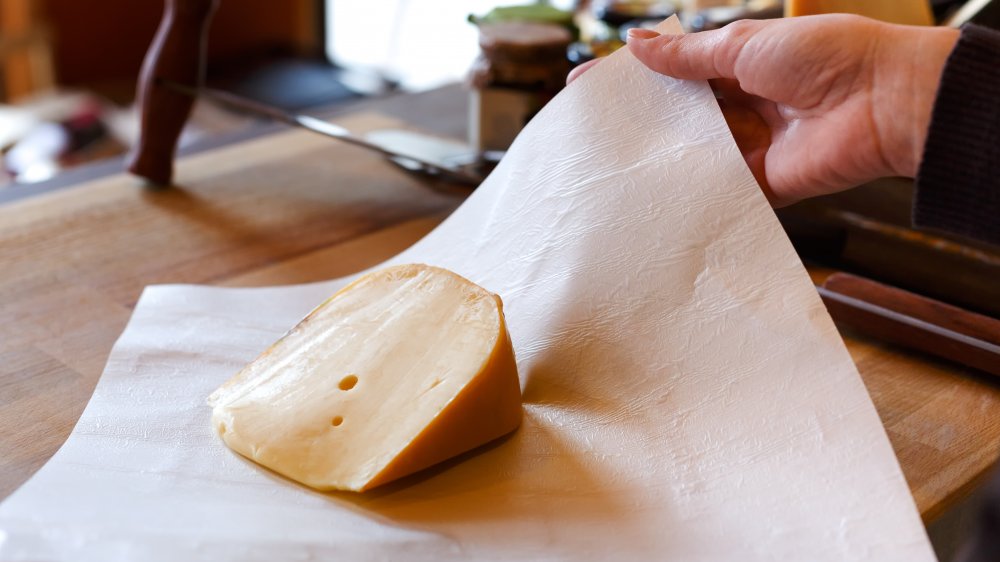You've Been Storing Cheese Wrong This Whole Time
Before you put that wedge of aged cheddar or gooey wheel of brie in the fridge, you should know that cheese benefits from some special attention. Storing cheese properly will increase shelf life while preserving texture and flavor.
First things first, never ever store your cheese in plastic wrap. Yes, if you're buying cheese at the grocery store, it's likely shrink-wrapped in the stuff but that doesn't mean it's good for the gouda. Joey Wells, Whole Foods Market's Global Senior Coordinator for Specialty Cheese Product Innovation and Development, told Eat This, Not That!, "Plastic wrap is by design a full barrier, and cheese needs air and humidity to breathe."
By suffocating your cheese, you risk not only sacrificing optimal flavor, as the cheese is cut off from necessary oxygen, but also potentially promoting the growth of bad bacteria (via Food 52). Wells adds that cheese can act as a sponge and absorb the flavor of the plastic wrap. The Kitchn recommends removing plastic packaging on your cheese asap after grocery shopping.
Parchment paper helps keep cheese fresh
If shop where there's a cheesemonger, chances are you're already familiar with the best way to store cheese: in specially designed cheese paper (via The Kitchn). It is porous, allowing the cheese to breathe, but still prevents the cheese from drying out. Parchment paper acts similarly. Using a large square, about two or three times the piece of cheese, wrap your cheese securely and label it for storage. That way you don't have to undo your handy work if you forget which wedge is which (via Food 52).
After wrapping, Food 52 recommends storing hard cheeses — which are prone to drying out — in an open plastic bag after they're wrapped to help preserve moisture. To avoid flavor co-mingling from those pungent blues, you can add another layer of parchment or place them in a loose-fitting plastic container after wrapping. Soft cheeses, like melty camembert, should have their paper changed every few days to avoid drying out. And while it may be a pain, you should take care to re-wrap your cheese every time you cut off a hunk (via Eat This, Not That!).
No matter which cheese you favor, the next step remains the same. Eat This, Not That! states that drawers tend to keep cheese at the ideal temperature: between 40 and 50 degrees Fahrenheit. The crisper drawer also helps your precious cheese retain humidity.

